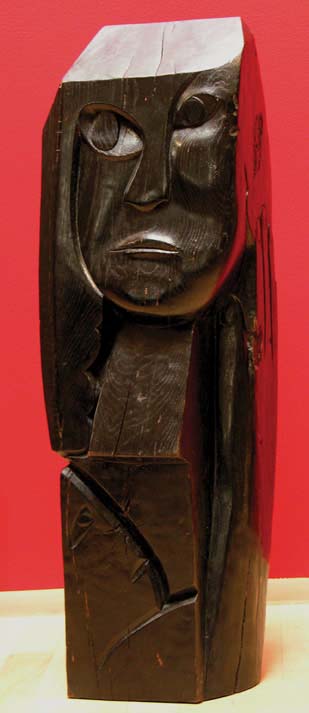

HENRI PUVREZ
"LA COUPLE"
WOOD, SIGNED
BELGUIM, C.1928
30.75 INCHES
Henri Puvrez Belgian, 20th Century was born 1893 in Molenbeek-St-Jean, Belgium. At the age of seven, he left for Spain, where he lived for two years. He retained a powerful memory of the little village of Vitoria, but returned to Brussels where he lived primarily until settling in Anvers in 1950. Puvrez was a pupil of I. De Rudder at the Académie des Beaux-Arts in Brussels for one year. He proved to be a sculptor with a classical sensibility for the human form. He carved primarily out of stone, specifically blue granite, creating sensitive, yet bold figures out of such a strong material. He was self-taught and did not adhere to the more academic tendencies of sculpture. Puvrez adopted a certain simplification of the form, even abstracted at times, that evokes the classical style of Western Europe at the beginning of century as well as the later works of Henry Moore. The period from about 1920 – 1940 marks Puvrez’s most prolific work including such works as Le Portait de Jeune Fille (1921) and Suzanne et les Vieillards (1940). From 1925, the Expressionist movement, at that time particularly strong in Belgium, led him back to expression of human reality, with elements of passion reminiscent of sculptors such as Zadkine and Jespers. He became interested in African sculpture and practiced woodcarving. His true style is best characterized by round, solid figures that are somewhat bulky, best demonstrated in Naiad for the Belgian Pavilion at the Exposition Universelle in Paris in 1937. Puvrez Between 1946 and 1958, Puvrez was a lecturer at the Hoger Instituut voor Schone Kunsten in Antwerp and became a member of the Académie Royale of Belgium. Puvrez died in 1971. |